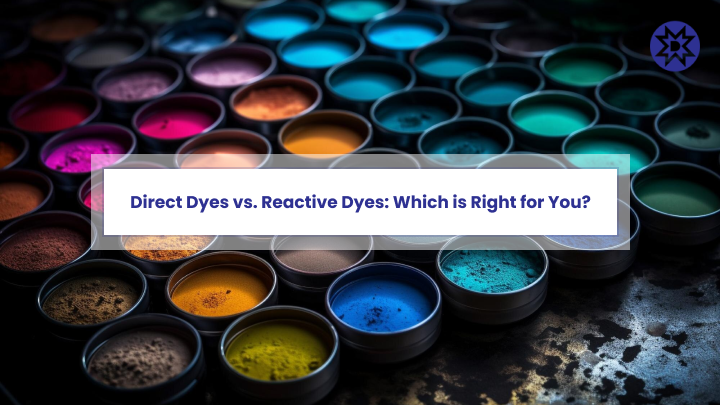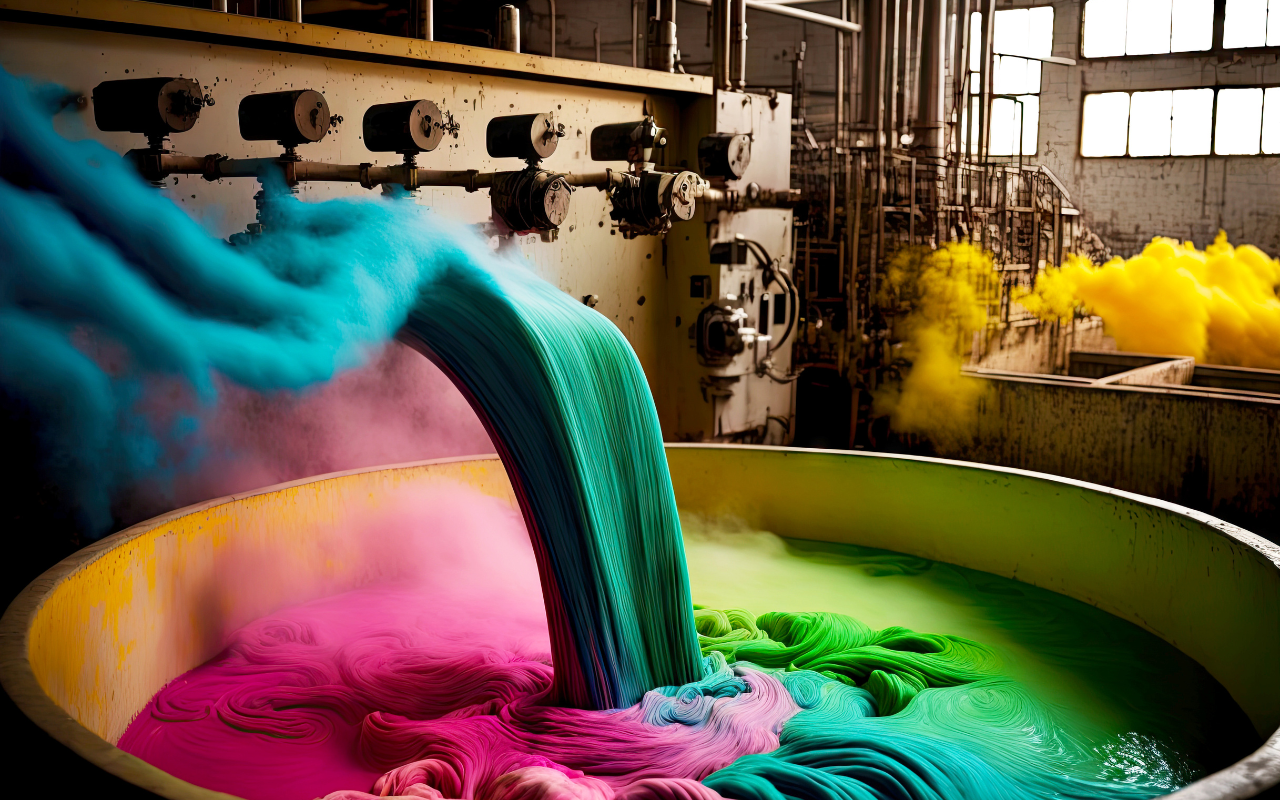Direct Dyes vs. Reactive Dyes: Which is Right for You?
When selecting the ideal dye for your textile needs, understanding the key differences between direct and reactive dyes is crucial. Each type of dye serves distinct purposes and has its own set of benefits and limitations, making it suitable for different materials and applications.
Understanding Direct Dyes: Properties and Practical Applications
Direct dyes, a class of dyestuffs that are characterized by their water solubility and straightforward application process, are primarily used for coloring cellulose fibers like cotton, rayon, and paper. Their molecular structure allows them to adhere to the fabric through hydrogen bonding and electrostatic attraction, simplifying the dyeing procedure without the need for a mordant.
Properties of Direct Dyes:
- Solubility: These dyes dissolve readily in water, facilitating a uniform distribution of color.
- Affinity: Direct dyes exhibit a high affinity for cellulosic fibers, ensuring that the dye penetrates deeply and evenly.
- Color Brilliance: While they provide vibrant colors initially, their susceptibility to fading under light and during washing is a notable drawback.
- Cost-Effectiveness: Generally less expensive than other types of dyes, making them a popular choice for large-scale textile applications.
Practical Applications:
- Textile Industry: Used extensively in the textile industry for coloring fabrics that are less subject to rigorous washing conditions.
- Paper Goods: Ideal for dyeing disposable paper products such as napkins, paper towels, and packaging materials.
- Leather Dyeing: Also used in the leather industry, although care must be taken due to the potential for color bleeding in wet conditions.
Things to consider: Choosing direct dyes for your manufacturing process involves balancing cost, application ease, and product requirements. They are particularly suitable for products where high color fastness is not critical, but economical production is essential.
Understanding Reactive Dyes: Properties and Practical Applications
Reactive dyes are favored for their excellent color fastness and vivid color output. They chemically bond with fibers, forming a covalent bond that is much more resistant to washing and light exposure. This makes them particularly suitable for high-quality textiles where longevity and color vibrancy are crucial.
Properties of Reactive Dyes:
- Chemical Bonding: Forms strong covalent bonds with the fiber, significantly enhancing wash and light fastness.
- Wide Color Spectrum: Capable of producing a wide range of bright and deep colors, reactive dyes are versatile in their application.
- Solubility and Application: Soluble in water, these dyes require a controlled alkaline environment for application, necessitating precise handling during the dyeing process.
Practical Applications:
- Fashion and Apparel: Ideal for clothing that demands high durability and color richness, such as sportswear and outdoor apparel.
- Home Textiles: Used in home textiles like towels and bed linens that frequently undergo hot wash cycles.
- Art and Craft: Increasingly popular in artisanal crafts for achieving vibrant and lasting colors on natural fibers.
Tips for Application:
- Pre-treatment: Ensure that the textile is thoroughly prepared and free from impurities to maximize dye uptake.
- Temperature and pH Control: Adhere to the specific temperature and pH requirements during the dyeing process to ensure optimal color fixation.
- Aftercare: Post-dyeing washes are necessary to remove any unreacted dye, which if not properly washed out, can lead to poor colorfastness.
By integrating these advanced dyes into your processes, you can significantly enhance the appeal and value of your textile products. Reactive dyes provide a robust solution for industries aiming for superior quality and durability in dyed materials.
Advantages and Disadvantages of Dyes
- Advantages of Direct Dyes: Cost-effectiveness, ease of application, and ability to produce vibrant colors are the major advantages. They are commonly used for non-critical consumer goods, including some fashion accessories and home textiles .
- Disadvantages of Direct Dyes: The main drawback is their poor wash and light fastness, which can lead to rapid color degradation under normal use conditions.
- Advantages of Reactive Dyes: Known for their color permanency and excellent fastness properties, reactive dyes are preferred for high-quality textiles that require long-lasting color vibrancy.
- Disadvantages of Reactive Dyes: They can be more complex to apply correctly and might require more rigorous post-dyeing washes to remove unreacted dye, which could increase the process cost and environmental impact.
Direct Dyes vs. Reactive Dyes: Comparison
| Aspect | Direct Dyes | Reactive Dyes |
| Color Fastness | Generally lower wash and light fastness, leading to potential fading and color bleeding. | Excellent wash and light fastness due to the covalent bonds formed with the fibers. |
| Application Process | Simpler application, does not require binding agents or extensive pre-treatment. | More complex application, requires precise control of pH, temperature, and post-dyeing rinses. |
| Cost | More cost-effective, making them suitable for large-scale and less critical textile applications. | Generally more expensive due to the chemicals and processes needed for dyeing. |
| Versatility | Suitable for a wide range of cellulosic fibers but limited in use where high fastness is required. | Versatile in application across a variety of natural and synthetic fibers, ideal for high-quality textiles. |
| Environmental Impact | Less intensive in terms of chemical use but may contribute to pollution due to poor dye fixation. | Requires more chemicals and water in processing, but better fixation reduces the impact of effluents. |
| Ease of Use | Easy to use with minimal technical requirements, making them accessible for various applications. | Requires careful handling and specific conditions for optimal use, posing challenges for untrained staff. |
| Durability | Lower durability of color in harsh conditions, such as intense washing or exposure to sunlight. | Highly durable colors that resist fading, even under strenuous conditions. |
| Suitability for Blends | Effective in dyeing blends containing high levels of cellulosic fibers. | Can dye both cellulosic and protein fibers, providing uniform coloration across blended fabrics. |
Which Dye is Right for You? Direct vs. Reactive Dyes
Choosing the right type of dye for your textile applications depends significantly on the fabric you’re using and the desired outcomes in terms of color fastness, application processes, environmental impact, and cost.
Direct Dyes: Direct dyes are best suited for projects where cost-effectiveness is key, and high color fastness is not critical. They are particularly useful for dyeing cellulose fibers like cotton, rayon, and paper products due to their ease of application and vibrant initial color output. However, direct dyes tend to fade quicker under exposure to washing and sunlight, making them less ideal for items requiring long-term color retention.
Application Scenarios for Direct Dyes:
- Low-cost fashion and accessories where high wash fastness isn’t necessary.
- Non-apparel textiles like napkins and packaging materials that are less likely to undergo frequent washing.
Reactive Dyes: Reactive dyes, on the other hand, are the choice for high-quality textile manufacturing where durability and color vibrancy are required. They form strong covalent bonds with the fiber, leading to excellent wash and light fastness. This makes reactive dyes ideal for clothing and home textiles that need to withstand frequent wash cycles and extensive exposure to environmental factors.
Application Scenarios for Reactive Dyes:
- High-end fashion and performance wear that requires long-lasting color.
- Home textiles such as towels and bed linens that are frequently washed.
- Cotton-blend fabrics where uniform dyeing is necessary, as reactive dyes can successfully color both the cotton and synthetic components of the blend.
Conclusion: The Role of Meghmani Global
As part of Meghmani Global, a leader in the dye industry, we pride ourselves on delivering high-quality dye products and solutions. Our extensive experience and commitment to innovation enable us to meet the diverse needs of our global clientele. Whether you require reactive dyes manufacturers for vivid and durable textiles or are exploring direct dyes manufacturers in Ahmedabad for cost-effective options, we are here to provide tailored solutions. Understanding the key factors above allows us to guide you in selecting the best options for your specific applications, ensuring both quality and environmental stewardship. To know more, get in touch with our dye experts today!
Source URL:
https://www.meghmaniglobal.com/direct-dyes-vs-reactive-dyes-which-is-right-for-you/



Comments
Post a Comment